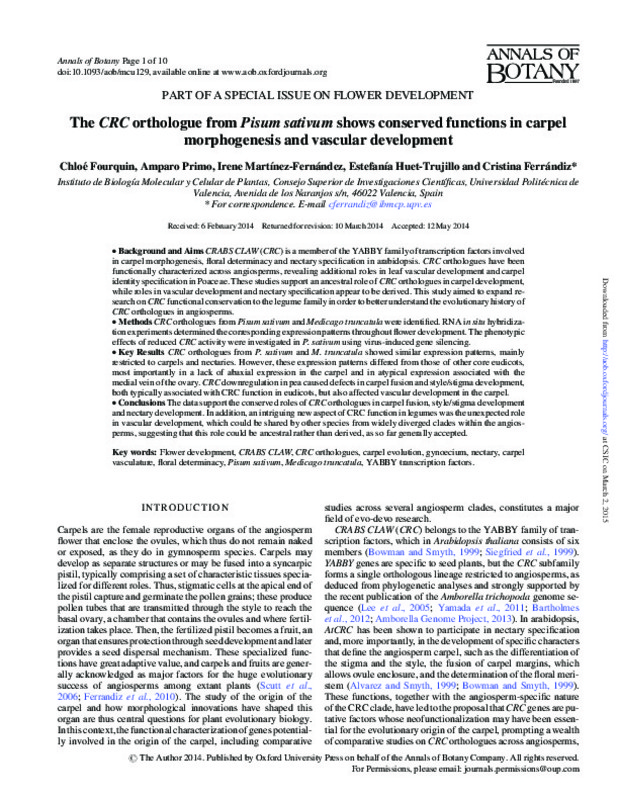JavaScript is disabled for your browser. Some features of this site may not work without it.
Buscar en RiuNet
Listar
Mi cuenta
Estadísticas
Ayuda RiuNet
Admin. UPV
The CRC orthologue from Pisum sativum shows conserved functions in carpel morphogenesis and vascular development
Mostrar el registro completo del ítem
Fourquin ., C.; Primo-Capella, A.; Martinez-Fernandez, I.; Huet-Trujillo, E.; Ferrandiz Maestre, C. (2014). The CRC orthologue from Pisum sativum shows conserved functions in carpel morphogenesis and vascular development. Annals of Botany. 114(7):1535-1544. https://doi.org/10.1093/aob/mcu129
Por favor, use este identificador para citar o enlazar este ítem: http://hdl.handle.net/10251/94544
Ficheros en el ítem
Metadatos del ítem
| Título: | The CRC orthologue from Pisum sativum shows conserved functions in carpel morphogenesis and vascular development | |
| Autor: | Fourquin ., Chloe Primo-Capella, Amparo Huet-Trujillo, Estefanía | |
| Entidad UPV: |
|
|
| Fecha difusión: |
|
|
| Resumen: |
[EN] CRABS CLAW (CRC) is a member of the YABBY family of transcription factors involved in carpel morphogenesis, floral determinacy and nectary specification in arabidopsis. CRC orthologues have been functionally characterized ...[+]
|
|
| Palabras clave: |
|
|
| Derechos de uso: | Reserva de todos los derechos | |
| Fuente: |
|
|
| DOI: |
|
|
| Editorial: |
|
|
| Versión del editor: | https://doi.org/10.1093/aob/mcu129 | |
| Código del Proyecto: |
|
|
| Agradecimientos: |
We thank Rafael Martinez-Pardo (IBMCP) for greenhouse support, Alejandro Terrones (IBMCP) for technical assistance and Elisabeth Johansen (University of Aarhus, Denmark) for providing VIGS plasmids and technical advice. ...[+]
|
|
| Tipo: |
|









